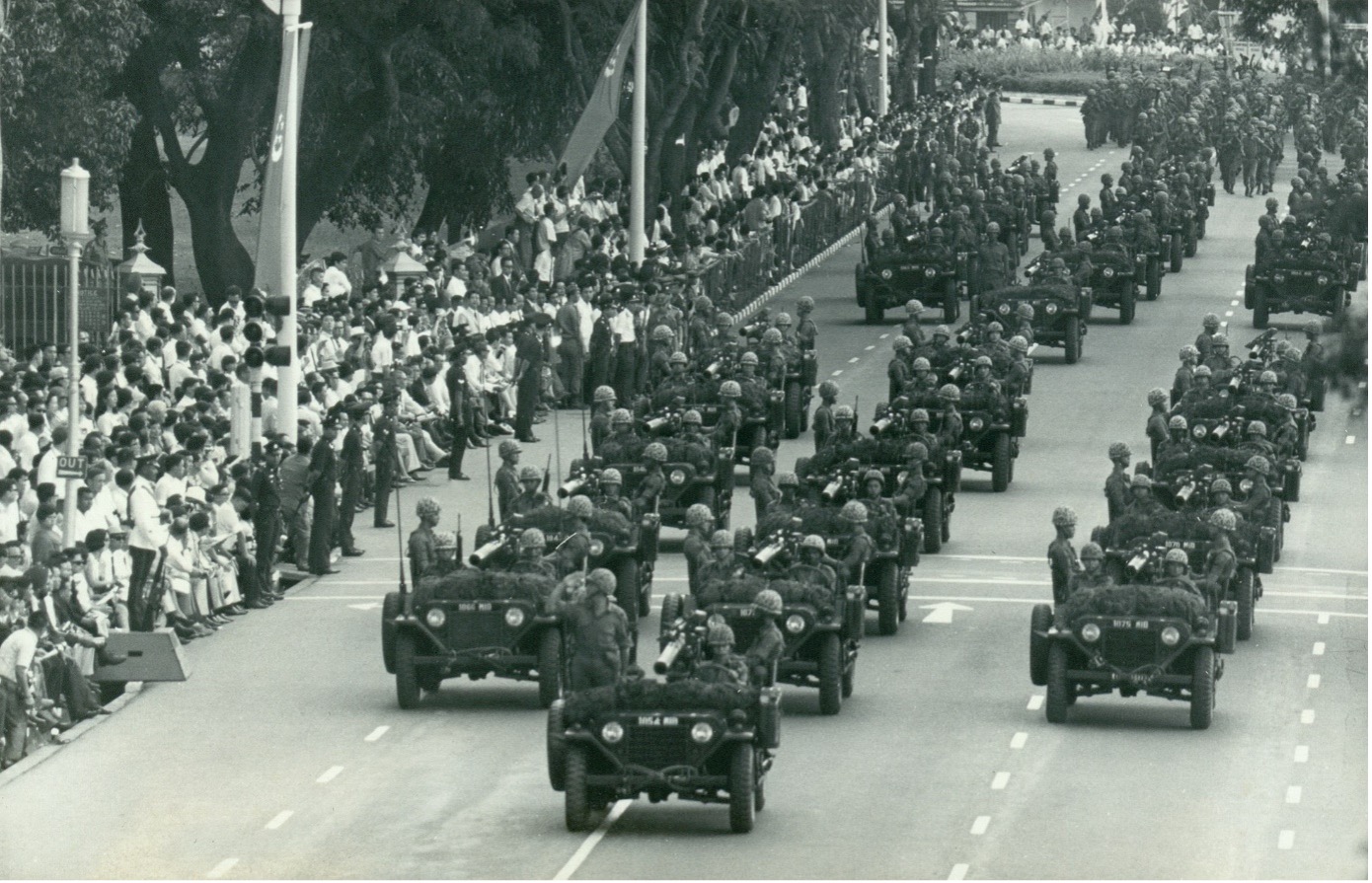Withdrawal of British Forces and the Need to Build Our Own Defence Force
Withdrawal of British Forces and the Need to Build Our Own Defence Force
Amid such regional hostilities, we had to contend with a serious blow to our national defence. In July 1967, the British announced that they would be withdrawing their military from Singapore. The withdrawal of British forces illustrated the need to build our own military to protect ourselves from hostile forces.

At independence, Singapore’s external security was still very much in the hands of British forces. However, the vast British Empire was being stretched thin with high defence expenditure and its weak economic performance. Hence it decided to withdraw most of its military forces East of Suez by 1971. This was a daunting prospect for Singapore’s defence and economy, as British military bases were contributing over 20 per cent to our gross national product at the time.
On 18 July 1967, the dreaded news arrived. Britain announced that it would withdraw its troops from Singapore by the mid-1970s. The withdrawal was brought earlier to 1971. We had to start relying on ourselves for the nation’s security.
Building Our Own Defence Force
Singapore had to build a defence force from almost nothing. Even though the British had helped Malaya build an army in the 1950s, the British did not assist us to build up our national defence because of their own economic problems. Mr Lee explained in his memoirs that the British felt Malaysia would want to be “our military instructors”, and only left some rudimentary equipment to us.
Back then, Singapore had only two regular infantry regiments (1 SIR and 2 SIR), the Singapore Volunteer Corps (SVC), two wooden hull boats and some equipment left behind by the British. As Singapore’s population was small, it would be difficult to build and maintain a credibly-sized defence force based on professional soldiers alone. The introduction of compulsory conscription of male youths, known as National Service (NS), was regarded as the best way of building up Singapore’s defence force in a reasonably short amount of time.
In fact, the concept of NS was not new. Back in March 1954, the British tried to introduce military conscription but the attempt was met with unhappiness amongst the local population which did not have a soldiering tradition. Some 500 male and female students from various Chinese high schools protested against the law on 13 May 1954, later known as the National Service Riots of 1954, resulting in clashes with the police.
The withdrawal of the British forces from Singapore by 1971 forced the newly formed government to push forward with the implementation of compulsory NS. This came at a time when Singapore, as a young nation, had many other pressing needs to address, such as providing basic housing and infrastructure, and public education. Without any experience in building and training a defence force, the Government wrote to several countries but they all declined to assist. Eventually, Singapore’s first Minister for Defence Dr Goh Keng Swee persuaded the Israelis to provide military training.
On 14 March 1967, the National Service (Amendment) Bill was passed. The first batch of 900 national servicemen started their training on 17 August 1967. The 900 were the only ones who served as full-time servicemen, while the rest of the 9,000 eligible enlistees served part-time in the People’s Defence Force, the Vigilante Corps and the Special Constabulary.
In 1969, our military strength was demonstrated at Singapore’s National Day Parade, with a procession of tanks and armoured vehicles. Today, our military defence consists of a forward-looking and integrated core of Singapore Armed Forces (SAF) regulars and Operationally Ready National Servicemen, supported by the SAF Volunteer Corps (SAF VC), and a population that is resilient and united who will stand together to protect Singapore when the times call for it.
 National Day Parade 1969 at the Padang – Debut of the Singapore Armed Forces (SAF) armoured mobile column at the parade. Image: Yusof Ishak Collection, courtesy of National Archives of Singapore (NAS).
National Day Parade 1969 at the Padang – Debut of the Singapore Armed Forces (SAF) armoured mobile column at the parade. Image: Yusof Ishak Collection, courtesy of National Archives of Singapore (NAS).

